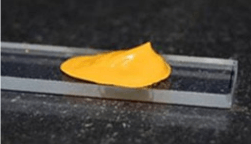Nanoparticle paint generates electricity
on

A team of researchers at the University of Notre Dame (Indiana, USA) has developed a low-cost ‘solar paint’ that uses semiconducting nanoparticles to generate electricity. By adding power-producing nanoparticles called quantum dots to a spreadable compound, the researchers produced a one-coat solar paint that can be applied to any conductive surface without using special equipment.
According to research team leader Prashant Kamat, a professor of chemistry and biochemistry and investigator at Notre Dame's Center for Nano Science and Technology, the team’s objective is to explore alternatives to conventional silicon-based solar technology. Their search for a new material focused on nano-sized particles of titanium dioxide coated with either cadmium sulphide or cadmium selenide. They emulsified these particles in a water/alcohol mixture to form a paste, which can be painted onto any conductive surface and generates electricity when exposed to light.
So far the best light-to-electricity conversion efficiency achieved by the team is 1%, which is well below the usual 10% to 15% figure for silicon solar cells, but according to Kamat the paint can be made cheaply and in large quantities, and if they can improve the efficiency somewhat they may be able to make a real difference in meeting energy needs in the future.
The team also intends to study ways to improve the stability of the new material, which they have christened ‘Sun-Unbelievable’.
Image: University of Notre Dame


Discussion (0 comments)